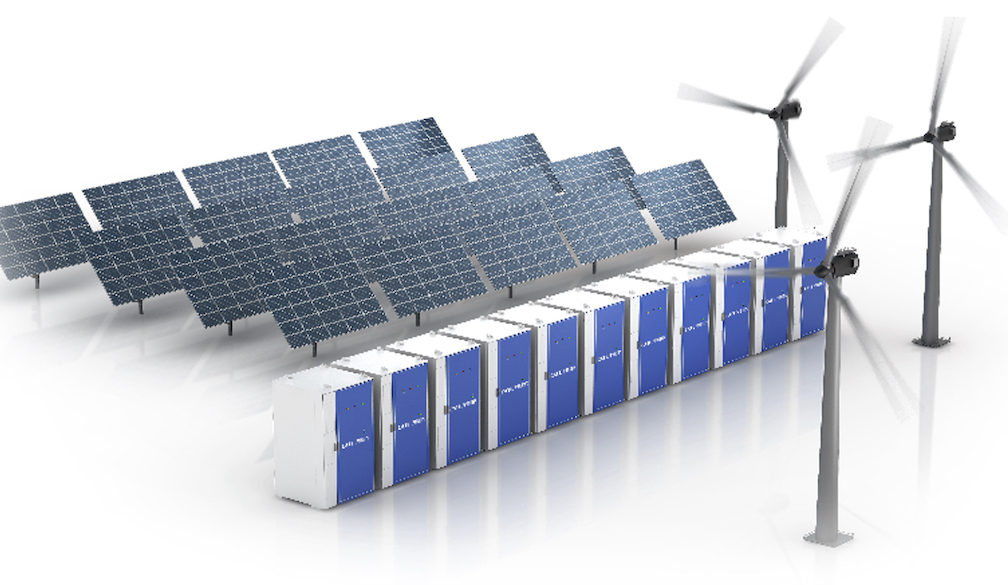How good is a solar system with an east-west orientation?

It is well known that a south-facing photovoltaic array produces the most yield. But what does it look like when your house roof is not aligned that way?
Often we also find an east-west orientation. This variant makes it possible to take the energy of the morning and evening sun with you. Today we will look at how useful an east-west photovoltaic system is and how it fares compared to the classic variant.
But we can give a few examples to give you an idea of what to expect.
If we look at the US again, we see that the average annual yield of a south-facing system is 950 kWh. This means that a south-facing system with an installed capacity of one-kilowatt peak produces around 950 kilowatt hours of electricity per year.
In contrast, an east-facing system in the US produces an average annual yield of around 750 kWh.
So, all other things being equal, an east-facing array produces about 200 kWh less electricity per year than a south-facing array.
Advantages of east-west photovoltaic systems
The raw numbers can now quickly lead to the assumption that an east-west solar system makes less sense.
However, that is not true. There are still a few points with which this "double solution" can score.
Uniform power generation
With this variant, you can produce solar power in the morning, afternoon, or evening. For most people, this is also the time when they need the most electricity.
On the other hand, South-facing PV systems generate the most electricity in the midday hours when many people are not at home.
This can be a problem if the solar power is not needed immediately, as it either has to be stored in an additional 12V lithium ion battery or fed into the public grid. The latter is no longer really attractive due to the falling feed-in tariffs.
Smaller or no memory is required
To be able to store the excess solar power properly, you also need this: A correspondingly large power storage unit. They are not exactly cheap and therefore drive up the acquisition costs.
With an east-west photovoltaic system, you can install a smaller lithium ion solar battery or even no battery and still fully use the solar power you have generated.
More flexibility in planning
At this point, it should also be mentioned that, depending on the individual circumstances, the south roof can also be affected by shadows or otherwise not optimally built on.
In such a case, a solar system on the east or west side is a much better solution.
More power on flat roofs
Most PV systems are installed on pitched roofs, providing the optimal angle for catching the sunlight.
However, there are also special mounting systems for flat roofs. An east-west solar powered generator system can deliver even more yield with a flat roof. Since more modules can be accommodated here due to the arrangement, an additional performance of up to 40% is possible!
Also, east-west layouts are less likely to have shading issues as the sun moves across the sky throughout the day. They are, therefore, an ideal solution for flat roofs.
The special arrangement makes east-west systems on flat roofs particularly attractive.
The optimal angle of inclination
The angle of inclination of a solar panel can significantly impact the amount of electricity it produces.
For systems facing south, an angle of between 30 and 35 degrees is considered optimal.
With east-west solar systems, on the other hand, the highest yields are achieved at an angle of inclination of up to 20 degrees. If you deviate from the optimal angles, you can still get a good yield, but the further away from optimal, the lower the yield.
Conclusion: An east-west photovoltaic system can be the better solution
Regarding solar energy, east-west-facing photovoltaic arrays are often less desirable than south-facing arrays.
As we have seen, but wrongly! There are several advantages to consider when choosing an east-west system – for example, consistent power generation throughout the day, less or no storage, and more scheduling flexibility.
In addition, flat roofs are better suited for east-west systems and usually have a higher yield than pitched roofs. So if you're considering installing small solar panels on your property, don't rule out an east-west orientation!
When does a solar system pay for itself?
When you invest in a solar power system, you are not only doing something for the environment but also making a smart financial investment. Solar energy is a free resource, and installing a photovoltaic system will significantly reduce your electricity bills. To double down on your savings, consider a heat pump hot water system installation and cash in on the government STC rebate scheme for heat pumps and new solar systems.
However, it is important to realize that it takes a while for a solar system to pay for itself. The initial investment can be significant, but with careful planning, you can ensure that your investment will pay for itself in just a few years.
If you understand how solar yield works and consider variables such as solar radiation and energy prices, you can estimate when your photovoltaic system will start working.
With this information, you can make a confident decision about whether or not solar energy is right for you.
What is meant by amortization for PV systems?
The photovoltaic amortization period is the period that elapses until the initial investment in a PV system has been amortized through saved electricity costs. This is calculated on total electricity costs including your solar hot water installation.
The average payback period is 9 to 14 years but can vary depending on factors such as the annual yield, the self-consumption rate, and the investment costs of the photovoltaic system.
Generally, systems with a higher yield and lower capital costs have a shorter payback period.
Self-consumption is also an important factor. PV systems that generate more electricity than is needed have a shorter payback period because the excess electricity is sold back to the grid.
Ultimately, the payback period is an important consideration when choosing a PV system, as it can affect the financial return on the investment.
Which factors influence the payback period?
Acquisition cost
When it comes to solar energy, the initial investment cost is important in deciding whether to install a photovoltaic system.
In 2022, a kilowatt peak of photovoltaics will cost an estimated $2,000. The size of the system plays a role in the price because small systems are usually more expensive because of the effort involved in installing, e.g., B. for connecting the inverter, is the same.
Larger systems tend to be less expensive per kilowatt peak, with some costing as little as $1,800. Considering these costs when switching to solar is important to get the most bang for your buck.
Power storage
If you're thinking about adding a power storage system to your photovoltaic system, you should know a few things. First, the initial cost can range from $5,000 to $15,000.
The amortization of your photovoltaic system can be delayed, but you will save money on your electricity costs in the long run. A power storage system can also help stabilize your energy supply and protect you from power outages.
Because of the ever-increasing electricity prices, a storage tank is recommended!
So if you're looking for a way to save money and increase your energy security, a power storage system could be for you.
Financing costs
If you take out a solar loan to finance your photovoltaic system, you have to pay additional interest of 2-3% on the investment costs.
The number of monthly installments and the loan duration depend on how much of the investment you finance and which loan term you choose.
If you finance 100% of the system, your monthly payments will be higher than if you only finance part of the system. And if you choose a longer loan term, you'll have lower monthly payments, but you'll pay more interest over the life of the loan.
Running costs
When calculating the payback period of a photovoltaic system, it is important to consider all relevant costs. In addition to the purchase and installation costs, ongoing maintenance costs must also be considered.
On average, maintaining a solar system costs around $200 per year. If you decide to take out insurance for your system, you add $100 per year.
These costs are not always included in the payback calculation because not every solar system owner has a maintenance contract or insurance.
However, if you have these costs, you should include them in the overall calculation. When you factor in all these costs, you can get a more accurate picture of the actual solar installation cost.
What income is there?
How much money you can earn with your photovoltaic system (PV system) depends primarily on your solar yield, i.e., the amount of electricity your system produces.
The more electricity your system generates, the more electricity you can feed into the public grid and receive a state feed-in tariff for it. The feed-in tariff is currently around 6.2 cents per kilowatt hour.
Even the self-consumption of solar power does not bring any direct income, but you can avoid electricity procurement costs with every kilowatt hour of solar power you use yourself.
Without a PV system, you would have to buy electricity from your utility for around 40 cents per kilowatt hour. This way, you can save money with a PV system over time.
The income from a photovoltaic system depends on the solar yield in kilowatt hours and on how much of the electricity generated is consumed or fed into the public grid.
If you only have a photovoltaic system, you can use about 30-40% of the electricity and feed the rest into the grid. An electricity storage system increases the self-consumption rate to 50-80%.
More electricity leads to a higher income since the avoided electricity costs are 40 cents instead of 10 cents per kilowatt hour. Therefore, using as much of the generated electricity as possible is advantageous.
Conclusion: Photovoltaic amortization
A photovoltaic system is a worthwhile investment for several reasons. First, it pays for itself in about 10 to 15 years. That means you'll save money on your electricity bills over their 25-year lifespan.
In addition, the maintenance costs for a off grid solar systems are very low because there are no moving parts that can break over time. Finally, a photovoltaic system increases the value of your home as it is considered a green energy source.











